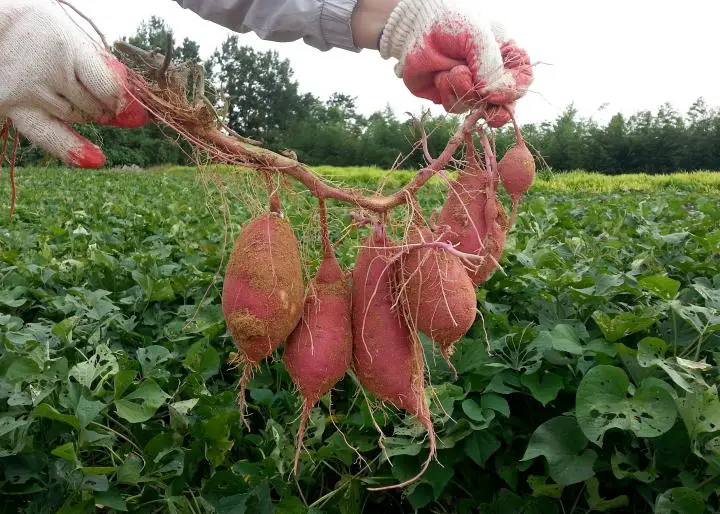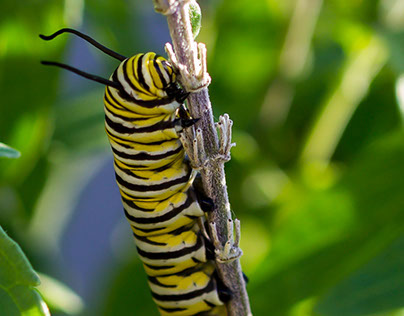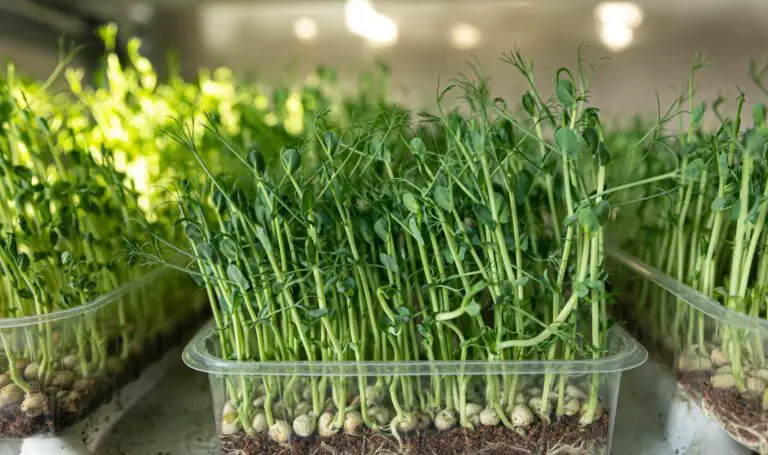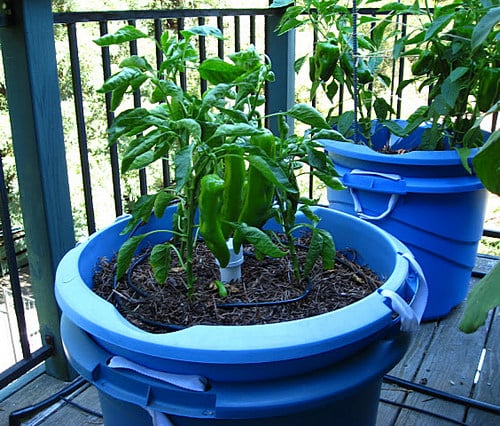Growing Tomatoes in Raised Beds: A Beginner’s Guide
Table of Contents
Preparing the Soil for Your Raised Beds
When it comes to preparing the soil for your raised beds, there are a few key factors to consider. First and foremost, it’s essential to ensure that the soil is well-draining and loose. This allows for proper aeration and prevents waterlogging, which can lead to root rot and other issues.
One effective method for improving soil drainage is to add organic matter such as compost or well-rotted manure. These materials help to break up compacted soil and improve its structure, allowing for better water infiltration and root development. Additionally, they provide essential nutrients for plant growth, fostering healthy and productive plants in your raised beds.
Another important aspect of soil preparation is pH level. It’s essential to test the pH of your soil and adjust it accordingly. Most vegetables, including tomatoes, thrive in slightly acidic soil with a pH level between 6.0 and 6.8. If your soil is too acidic or alkaline, you can modify it by adding amendments such as lime or sulfur. Regular soil testing is recommended to ensure the pH remains within the ideal range for optimal plant growth.
By taking the time to properly prepare the soil in your raised beds, you’ll set the stage for success in your tomato garden. With well-draining soil enriched with organic matter and pH levels in the appropriate range, your plants will have the ideal conditions to flourish and produce abundant, flavorful tomatoes.
Choosing the Right Tomato Varieties for Raised Beds
When it comes to choosing the right tomato varieties for raised beds, there are a few factors to consider. First and foremost, it’s important to select tomato varieties that are well-suited to the specific growing conditions of raised beds. This means choosing varieties that are known for their compact growth habits, as they will have an easier time fitting within the confines of the raised bed space.
Additionally, the time to maturity for different tomato varieties should also be taken into account. If you’re looking for an early harvest, consider choosing varieties that have a shorter maturity period. On the other hand, if you’re willing to wait a bit longer for your tomatoes, there are plenty of late-maturing varieties available as well. Ultimately, the choice will depend on your growing goals and preferences.
Some popular tomato varieties that are often recommended for raised bed gardening include ‘Roma,’ ‘Celebrity,’ ‘Cherry,’ and ‘Big Beef.’ These varieties are known for their compact growth habits, disease resistance, and delicious fruits. However, it’s worth noting that there are countless other varieties to choose from, each with its own unique traits and flavor profiles. So, don’t be afraid to experiment and find the tomato varieties that best suit your taste and garden needs.
Start Seeds Indoors or Buy Transplants?
Starting seeds indoors or buying transplants is a decision that every gardener faces when it comes to growing tomatoes in raised beds. Both methods have their advantages and it ultimately depends on your specific circumstances and preferences.
Starting seeds indoors allows for greater control over the growing conditions right from the beginning. You can choose from a wider variety of tomato varieties and control the quality of the soil, light, and temperature. This method is ideal for gardeners who want to experiment with different varieties or have specific preferences for growing conditions. Additionally, starting seeds indoors can extend your growing season by several weeks, giving your tomatoes a head start before transplanting them into the raised beds.
On the other hand, buying transplants can save you time and effort. It eliminates the need for germination and early care of seedlings. This method is particularly attractive for those who have limited time or experience, as it allows you to skip the initial steps of starting seeds indoors. Additionally, transplants are ready to be planted as soon as the weather conditions are suitable, which can be advantageous if you have a short growing season.
Ultimately, the decision to start seeds indoors or buy transplants depends on your own preferences, available time, and experience level. Both methods can be successful, and it’s important to consider your specific needs and goals when making this choice for your raised bed tomato garden.
Transplanting Tomatoes into Raised Beds
When it comes to transplanting tomatoes into raised beds, there are a few key steps to ensure success. First, it is important to choose healthy tomato seedlings that are about 6-8 weeks old and have strong, sturdy stems. Look for plants that have deep green leaves and no signs of disease or pests.
Before transplanting, make sure the soil in your raised bed is well-prepared. Raised beds provide an opportunity to create an ideal growing environment for tomatoes by adding organic matter, such as compost or well-rotted manure, to improve soil structure and fertility. Additionally, it is important to ensure that the soil is well-draining to prevent waterlogging, which can lead to root rot. Take the time to remove any weeds or debris from the bed and loosen the soil with a garden fork or tiller.
When transplanting the tomatoes, dig a hole that is slightly larger than the root ball of the seedling. Gently remove the seedling from its container, being careful not to damage the roots. Place the seedling in the hole and backfill with soil, making sure to firm it gently around the base of the plant. Water the transplants well to help them settle into their new home.
By following these steps, you are well on your way to successfully transplanting tomatoes into your raised beds. With proper care and attention, your tomato plants will thrive and produce an abundant crop for you to enjoy.
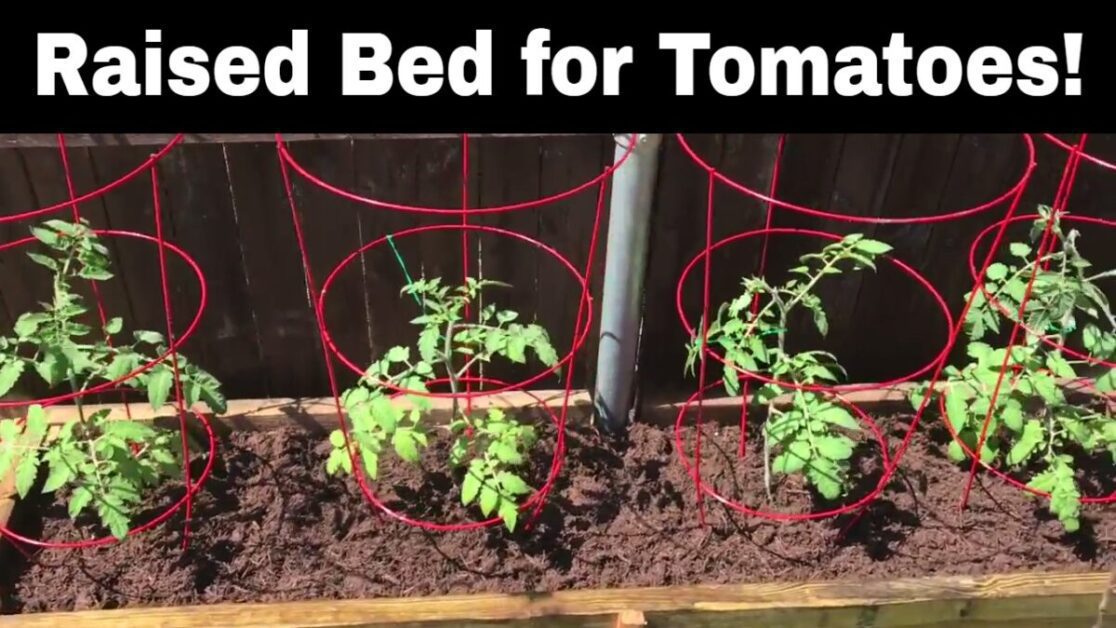
Spacing and Staking Tomatoes in Raised Beds
Proper spacing and staking of tomato plants in raised beds are essential practices for optimizing growth and maximizing yields. Adequate spacing allows each plant to receive sufficient sunlight, air circulation, and access to nutrients, promoting healthier plants and reducing the risk of diseases. In general, it is recommended to space tomato plants in raised beds approximately two feet apart, both within rows and between rows. This spacing provides ample room for the plants to grow and develop without competing for resources. Additionally, it facilitates ease of maintenance and harvesting, allowing for convenient access to each plant.
Staking is another crucial technique for supporting tomato plants in raised beds. As these plants have a sprawling habit and can become quite heavy with fruits, staking helps prevent them from leaning, bending, or even breaking. It promotes vertical growth and prevents the branches from touching the ground, reducing the risk of soil-borne diseases. There are various staking methods to choose from, including using individual stakes for every plant or using a trellis system for multiple plants. Whichever method is selected, it is essential to secure the tomato plants to the stakes or trellises using soft ties or twine, ensuring that they are gently but firmly supported. Staking also facilitates the efficient use of space in raised beds and allows for better light penetration and airflow, leading to healthier plants and higher yields.
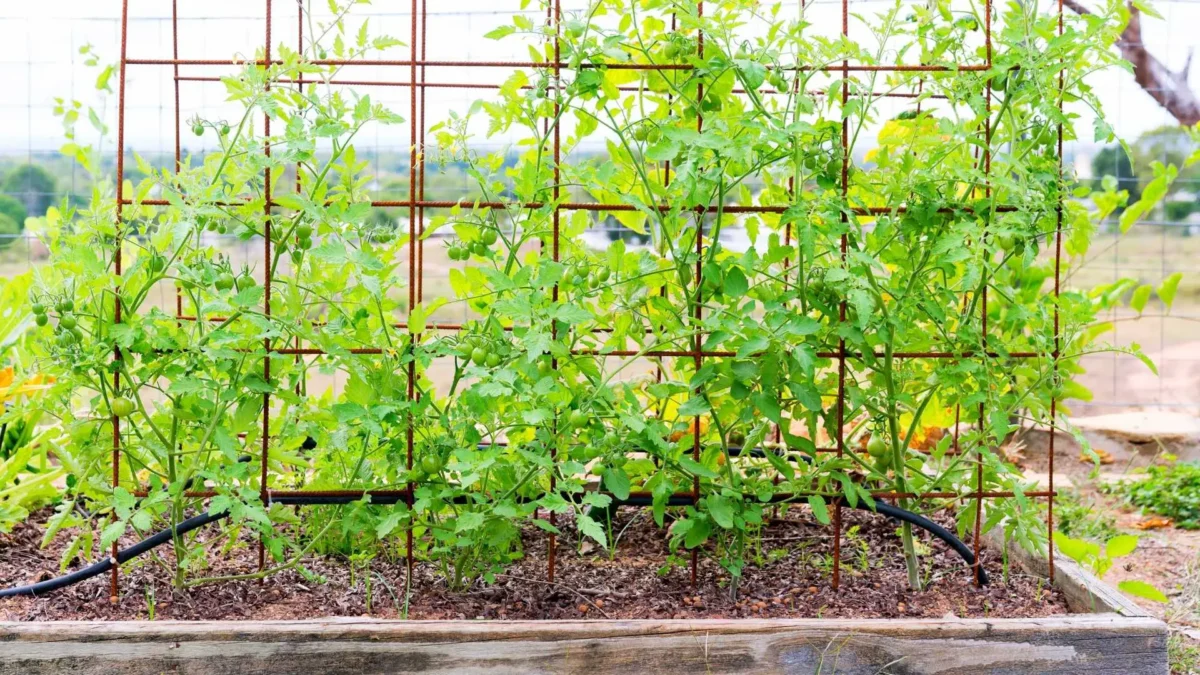
Providing Proper Watering for Tomatoes in Raised Beds
Proper watering is essential for the health and productivity of tomato plants in raised beds. As we all know, water is a vital resource for all plants, and tomatoes are no exception. However, it is crucial to strike a balance between providing enough water and avoiding overwatering, as excessive moisture can lead to root rot and other issues.
So how do we provide proper watering for tomatoes in raised beds? Firstly, it is important to understand the watering needs of tomato plants. Tomatoes require consistent moisture throughout their growing season, particularly during the flowering and fruiting stages. A general rule of thumb is to provide about 1 to 1.5 inches of water per week, either through rainfall or supplemental irrigation.
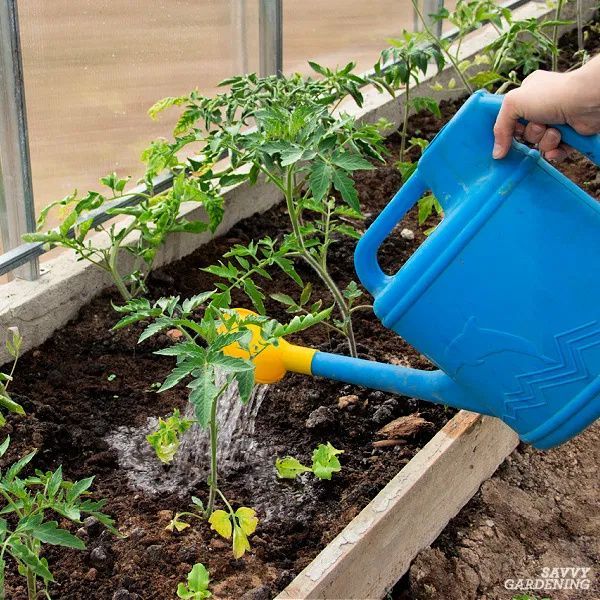
Fertilizing Your Tomato Plants in Raised Beds
Fertilizing your tomato plants in raised beds is essential for ensuring healthy growth and an abundant harvest. The right balance of nutrients is crucial, as tomatoes have specific nutritional needs throughout their growing cycle. Proper fertilization will not only promote vigorous plant growth but also enhance fruit development and flavor.
When it comes to fertilizing tomatoes in raised beds, it’s important to start with quality soil that is rich in organic matter. Before planting, incorporate compost or well-rotted manure into the soil to improve its fertility. This will provide a steady supply of nutrients to your plants and help retain moisture, ensuring their overall health and productivity.
During the growing season, regular fertilization is necessary to meet the nutritional demands of tomato plants. A balanced fertilizer with equal parts nitrogen (N), phosphorus (P), and potassium (K) is ideal for promoting healthy foliage, strong root development, and optimal fruit production. Applying a slow-release fertilizer at planting time or side-dressing with a granular or liquid fertilizer throughout the season can provide the necessary nutrients your tomatoes need. However, it’s crucial to follow the manufacturer’s instructions and not exceed the recommended application rates to avoid nutrient imbalances and potential plant damage.
Remember, every tomato variety and garden environment can have unique nutrient requirements, so it’s essential to monitor your plants closely. Observe any signs of nutrient deficiencies, such as yellowing leaves, stunted growth, or poor fruit development, and adjust your fertilization program accordingly. By providing your tomato plants with the necessary nutrients, you’ll be well on your way to a bountiful harvest of delicious and healthy tomatoes from your raised beds.
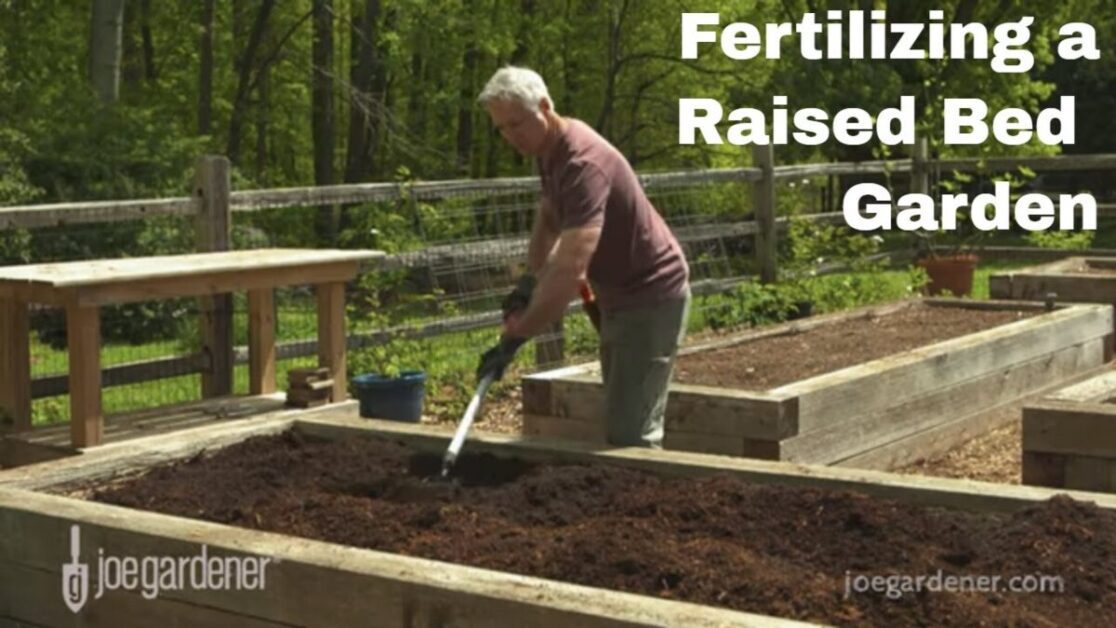
Managing Pests and Diseases in Raised Bed Tomato Gardens
Pests and diseases can wreak havoc on your prized tomato plants, but with proper management strategies, you can minimize their impact in your raised bed tomato gardens. One effective approach is to practice preventive measures, such as regular monitoring and removing any infected or infested plants immediately. This can help prevent the spread of pests and diseases to healthy plants nearby.
In addition, intercropping or companion planting can be an effective technique for managing pests in raised bed tomato gardens. Certain plants, such as marigolds or basil, release natural chemical compounds that repel common tomato pests like aphids or nematodes. By strategically planting these companion plants, you can create a more favorable environment for your tomatoes and reduce the risk of pest infestations.
Remember, prevention is key when it comes to managing pests and diseases in raised bed tomato gardens. By following these strategies, you can safeguard your plants and enjoy a bountiful harvest of delicious, healthy tomatoes. Stay tuned for our next section on pruning and training techniques to optimize your tomato plants’ growth in raised beds.
Certainly! Here’s a table highlighting common pests and diseases in raised bed tomato gardens along with prevention and management techniques:
| Issue | Description | Prevention and Management |
|---|---|---|
| 1. Foliar Diseases | Includes bacterial speck, gray leaf spot, and early blight. | – Provide adequate air flow: Avoid crowding plants, prune regularly, and ensure good ventilation. – Select disease-resistant varieties. |
| 2. Late Blight | Nickel-sized, wet or greasy-looking spots on leaves, white, fuzzy fungal growth on the underside. | – Remove infected leaves and stems. – Avoid overhead watering. – Fungicide application if necessary. |
| 3. Soilborne Diseases | Includes bacterial wilt, corky root rot, and Fusarium wilt. | – Rotate crops. – Space plants appropriately. – Avoid wetting foliage with irrigation water. |
| 4. Pests | Common pests include aphids, cutworms, and whiteflies. | – Companion planting: Marigolds, basil, and nasturtiums repel pests. – Beneficial insects: Encourage ladybugs, lacewings, and parasitic wasps. – Physical barriers: Use row covers to protect plants. |
| 5. Nematodes | Soil-dwelling pests that damage roots. | – Solarization: Cover soil with clear plastic to kill nematodes. – Resistant tomato varieties. – Crop rotation. |
Remember, proactive measures and timely interventions are essential for a healthy tomato crop!
Pruning and Training Tomatoes in Raised Beds
When it comes to growing tomatoes in raised beds, proper pruning and training techniques are essential for maximizing yields and maintaining plant health. Pruning involves selectively removing certain parts of the plant, such as suckers and lower leaves, while training refers to supporting the plant and directing its growth in a desired manner. By employing these practices, you can promote better air circulation, reduce the risk of disease, and encourage the development of strong, productive tomato plants.
Suckering is an important pruning technique for tomato plants in raised beds. Suckers are the new shoots that emerge in the leaf axils, where the leaf meets the stem. While these suckers may eventually produce fruit-bearing branches, leaving them unchecked can result in a crowded and tangled plant that is more susceptible to diseases. By regularly removing suckers, you can redirect the plant’s energy towards growing larger and more bountiful fruits. It is recommended to pinch off suckers when they are small and tender, using clean pruners or your fingers. Be sure to remove them at the base, close to the main stem, to avoid unnecessary damage to the plant.
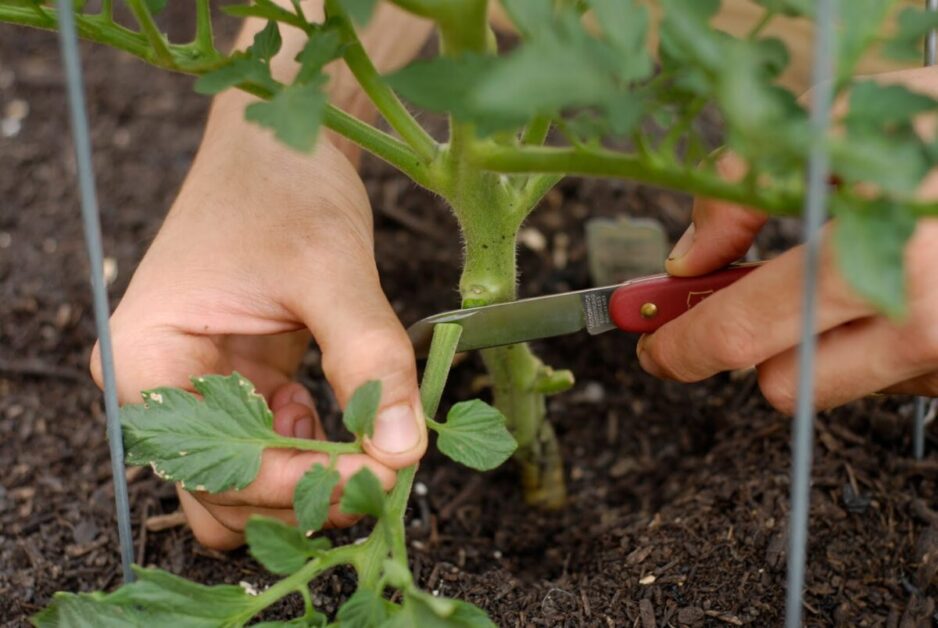
Harvesting and Storing Tomatoes from Raised Beds
When it comes to harvesting tomatoes from raised beds, timing is crucial. You want to make sure that the tomatoes are fully ripened on the vine before picking them. Look for tomatoes that are firm and have a deep, vibrant color. Avoid picking tomatoes that are still green or have a pale color, as they will not have reached their full flavor potential. Gently twist or cut the stem of the tomato, being careful not to damage the plant or the surrounding fruits.
Once you have harvested your tomatoes, it’s important to store them properly to maintain their freshness and flavor. One popular method is to store tomatoes at room temperature, away from direct sunlight. This allows the tomatoes to continue ripening and develop their full flavor. However, if you have a large harvest and need to store them for a longer period, you can refrigerate them. Just make sure to bring them back to room temperature before consuming to enhance their taste. Keep in mind that refrigeration can affect the texture of tomatoes, so it is best to use them within a few days.
Extending the Tomato Growing Season in Raised Beds
Extending the Tomato Growing Season in Raised Beds
One of the key advantages of using raised beds for tomato cultivation is the ability to extend the growing season. By implementing a few strategies, gardeners can enjoy fresh, homegrown tomatoes for an extended period, even into the colder months. Here are a couple of techniques to help you maximize the longevity of your tomato plants in raised beds.
1. Implement Season Extension Structures: To ward off chilly temperatures and protect your tomato plants, consider utilizing season extension structures such as hoop houses or cold frames. These structures act as miniature greenhouses by trapping heat and creating a microclimate around the plants. With proper insulation and ventilation, they can provide the ideal environment for tomatoes to thrive, allowing you to harvest fruits well beyond the traditional growing season. Keep in mind that these structures may require additional maintenance, such as monitoring temperature fluctuations and adjusting ventilation accordingly, to ensure optimal conditions for tomato growth.
2. Utilize Row Covers: Row covers are lightweight fabric blankets that can be placed directly over the tomato plants. They act as a physical barrier, protecting the plants from cold temperatures, wind, and pests. Row covers are excellent for extending the growing season in both the spring and fall when temperatures can fluctuate. In the spring, they can be used to warm the soil and protect young tomato seedlings from late frosts. In the fall, row covers help to insulate the plants and prolong their productivity. Additionally, row covers offer the added benefit of preventing common tomato pests, such as aphids or flea beetles, from damaging your plants.
By implementing these season extension techniques, gardeners can enjoy a more prolonged harvest period from their raised bed tomato plants. With careful planning and execution, the joy of fresh, homegrown tomatoes can be experienced well beyond the traditional growing season. Stay tuned for more tips on getting the most out of your raised bed tomato garden!
Companion Planting with Tomatoes in Raised Beds
Companion planting is a clever technique that can enhance the growth and overall health of tomato plants in raised beds. When it comes to selecting suitable companion plants for tomatoes, there are a few factors to consider. One important consideration is to choose plants that are compatible with tomatoes in terms of nutrient requirements, growth patterns, and pest deterrent capabilities.
For instance, basil is a popular companion plant for tomatoes as it helps repel pests like aphids, whiteflies, and hornworms. The aromatic oils emitted by basil can act as a natural insect repellent, reducing the risk of infestations on your tomato plants. Additionally, the shallow root system of basil allows it to coexist harmoniously with the deep-rooted tomato plants, without competing for nutrients.
Another beneficial companion plant for tomatoes is marigold. Marigolds not only add beauty to your raised beds but also act as a natural pest repellent. Their strong scent repels nematodes, a type of soil-dwelling pest that can harm tomato plants. Furthermore, marigolds attract pollinators like bees, which play a crucial role in the successful pollination of tomato flowers, leading to better fruit production.
In conclusion, companion planting with tomatoes in raised beds can provide numerous benefits. By strategically selecting the right plants to grow alongside tomatoes, you can enhance pest control, promote pollination, and create a more diverse and vibrant garden ecosystem. So, consider incorporating basil, marigolds, and other compatible plants into your raised bed tomato garden to reap the rewards of companion planting.
Mulching Techniques for Tomato Plants in Raised Beds
Mulching is an essential technique for maintaining healthy and productive tomato plants in raised beds. The use of mulch not only conserves moisture in the soil but also helps to suppress weeds, regulate soil temperature, and prevent soil erosion. When it comes to mulching tomato plants in raised beds, there are a few key techniques to keep in mind.
First and foremost, choose the right type of mulch for your tomato plants. Organic mulches such as straw, leaves, or grass clippings are excellent options as they break down over time, enriching the soil with nutrients. Additionally, these organic mulches help to improve soil structure and fertility. In contrast, using inorganic mulches like black plastic or landscape fabric can provide effective weed suppression and heat retention, but they do not contribute to soil health. The choice of mulch ultimately depends on your specific gardening goals and preferences.
Certainly! Here’s a table highlighting mulching techniques for tomato plants in raised beds:
| Mulching Material | Description |
|---|---|
| 1. Shredded Leaves | Shredded dead leaves are an excellent mulch for tomato plants. They protect the soil, improve soil health as they break down, and retain moisture. Ensure leaves are shredded to maximize their benefits and prevent water and air blockage. Avoid overly thick layers to prevent root rot. |
| 2. Grass Clippings | Fresh grass clippings can be used as mulch. Apply a thin layer around tomato plants to retain moisture and suppress weeds. Be cautious not to use clippings treated with herbicides or pesticides. |
| 3. Straw | Straw is a popular organic mulch. It keeps soil cool, prevents weed growth, and decomposes gradually to enrich the soil. Apply a 2-4-inch layer around tomato plants, leaving a small well around the stem to prevent compaction. |
| 4. Peat Moss | Peat moss is lightweight and retains moisture well. Use it as a mulch around tomato plants to keep the soil consistently moist. |
| 5. Pine Bark | Pine bark mulch provides good insulation, regulates soil temperature, and prevents compaction. Apply a layer around tomato plants to enhance soil structure and reduce weed growth. |
Remember to choose a mulching material that suits your preferences and local availability.
Dealing with Common Tomato Problems in Raised Beds
When growing tomatoes in raised beds, it is common to encounter certain problems that can pose a challenge to their overall health and productivity. One common issue faced by gardeners is blossom end rot, where the bottom of the tomato fruit develops a dark, leathery patch. This is caused by a calcium deficiency in the plant, which can be exacerbated by inconsistent watering or pH imbalances in the soil. To prevent blossom end rot, it is crucial to ensure adequate calcium availability by incorporating organic matter rich in calcium, such as crushed eggshells or agricultural lime, into the soil before planting. Additionally, maintaining consistent moisture levels by using drip irrigation or soaker hoses and monitoring soil pH can help mitigate this problem.
Another problem often encountered in raised bed tomato gardens is fungal diseases, such as early blight and late blight. These diseases can cause brown spots on leaves, stem lesions, and fruit rot, ultimately leading to a decreased yield. To prevent fungal diseases, it is important to practice proper spacing between plants, allowing for good air circulation and reducing the likelihood of moisture buildup. Regularly inspecting plants for early signs of infection and promptly removing any diseased leaves or fruits can also help to control the spread of fungal diseases. Additionally, applying organic fungicides, such as copper-based sprays, can provide an extra layer of protection against these troublesome diseases.
Addressing these common tomato problems in raised bed gardens is essential to ensure the success of your tomato crop. By actively monitoring and taking preventive measures against issues like blossom end rot and fungal infections, gardeners can promote healthy plant growth and maximize their tomato harvest. Remember, careful attention to soil nutrition, watering practices, spacing, and disease management will go a long way in fostering thriving tomato plants in raised beds.
Succession Planting for Continuous Tomato Harvests in Raised Beds
Succession planting is a technique that allows gardeners to maximize their tomato harvests throughout the growing season in raised beds. By staggering the planting of tomato seedlings at regular intervals, you can ensure a continuous supply of ripe, juicy tomatoes for an extended period. This approach is particularly beneficial in regions with short growing seasons or unpredictable weather conditions, as it reduces the risk of losing an entire crop to unfavorable conditions.
To implement succession planting in your raised beds, it is essential to plan ahead and consider factors such as the maturity time of different tomato varieties and the length of your growing season. Begin by determining the average number of days required for each variety to reach maturity, as specified on the seed packet or plant label. Once you have this information, you can calculate the ideal planting intervals to ensure a steady supply of tomatoes. For example, if your first batch of tomato seedlings takes 60 days to mature, you might plant a new batch every two weeks to ensure a continual harvest. This way, as one set of plants starts to bear fruit, the next set will be reaching their prime, ensuring a seamless flow of fresh tomatoes throughout the growing season.
Succession planting not only prolongs your tomato harvest but also provides an opportunity to experiment with different tomato varieties. While it’s always tempting to stick to tried-and-true favorites, planting a mix of early-maturing, mid-season, and late-maturing varieties can add variety to your garden and extend the harvesting period. Consider selecting tomato varieties with different flavors, colors, and uses, such as slicing tomatoes, cherry tomatoes, and paste tomatoes. This diversity will enhance your culinary creations and keep your taste buds satisfied all season long.
By employing the technique of succession planting, you can achieve a continuous supply of delicious tomatoes from your raised beds. The careful planning and timing involved may require some upfront effort, but the rewards are undoubtedly worth it. So go ahead and embrace succession planting in your garden, and enjoy an abundant harvest of garden-fresh tomatoes throughout the summer.
Tips for Overwintering Tomato Plants in Raised Beds
As the gardening season comes to an end, you may be wondering how to extend the life of your beloved tomato plants. Overwintering tomato plants in raised beds can be a challenging but rewarding endeavor. By following a few key tips, you can help your tomatoes survive the colder months and thrive in the following growing season.
One important aspect of overwintering tomato plants is selecting the right varieties. Look for cold-tolerant tomato varieties that are specifically bred for winter conditions. Some popular choices include ‘Siberian’, ‘Yellow Pear’, and ‘Oregon Spring’. These varieties have been developed to withstand cooler temperatures and shorter daylight hours, ensuring a better chance of survival. By choosing the right tomato varieties for overwintering, you are setting yourself up for success right from the start.
Watch the below video for more information.
Can tomato plants survive the winter in raised beds?
Yes, tomato plants can be overwintered in raised beds with proper care and protection.
When is the best time to start preparing the soil in raised beds for overwintering tomato plants?
It is recommended to start preparing the soil a few weeks before the first frost date in your area.
Should I choose specific tomato varieties for overwintering in raised beds?
Yes, selecting cold-tolerant tomato varieties is crucial for successful overwintering in raised beds.
Can I start tomato plants from seeds indoors for overwintering in raised beds?
Starting tomato seeds indoors is not necessary for overwintering, as established plants are more suitable for the process.
How should I transplant tomato plants into raised beds for overwintering?
Carefully transplant the tomato plants into well-prepared and amended raised bed soil, ensuring proper spacing between plants.
Is staking necessary for tomato plants in raised beds during the overwintering period?
Staking tomato plants in raised beds is beneficial for support and airflow, especially during the winter.
How should I water tomato plants in raised beds during winter?
Provide regular but moderate watering, ensuring the soil remains evenly moist but not waterlogged.
Do tomato plants in raised beds require fertilization during the overwintering period?
Fertilizing tomato plants sparingly with a balanced fertilizer can be beneficial during the overwintering period.
How can I protect tomato plants in raised beds from pests and diseases during winter?
Implement proper pest and disease management practices, such as removing fallen leaves, using organic pest control methods, and providing good airflow.
Should I prune and train tomato plants in raised beds for overwintering?
Light pruning and training can help maintain a manageable size and shape for tomato plants during the overwintering period.
Can I continue to harvest tomatoes from raised beds during the winter?
Tomato production during winter is limited, but you may still be able to harvest some ripe tomatoes if the plants are properly maintained.
How can I extend the tomato growing season in raised beds?
Using season extension techniques like row covers or cold frames can help extend the tomato growing season in raised beds.
Are there any companion plants that can be grown with tomatoes in raised beds during winter?
Yes, certain companion plants like parsley, garlic, and marigolds can be beneficial for tomatoes in raised beds during the winter.
What mulching techniques should be used for tomato plants in raised beds during winter?
Applying a layer of organic mulch around the base of tomato plants can help conserve moisture and regulate soil temperature during winter.
How should I deal with common tomato problems in raised beds during winter?
Proper sanitation, regular inspection, and implementing preventive measures can help manage common tomato problems in raised beds during winter.
Can I practice succession planting with tomato plants in raised beds for continuous harvests during winter?
Succession planting may not be practical for tomatoes in raised beds during winter, as their growth and fruit production slow down significantly.
What are some tips for successfully overwintering tomato plants in raised beds?
Some tips include protecting the plants from frost, providing adequate sunlight, maintaining proper watering, and monitoring for any signs of stress or disease.

Nicole Burke is a dynamic writer at SouthElMonteHydroponics, fueled by her passion for horticulture and environmental sustainability. Armed with a degree in Environmental Science from a renowned institution, Nicole’s expertise lies in hydroponic gardening, organic farming, and biodiversity conservation. Her insatiable curiosity and love for nature drive her to explore innovative techniques in hydroponics, seeking to revolutionize the way we grow crops in urban environments. Nicole’s writing reflects her deep commitment to promoting eco-conscious practices and fostering a deeper connection between humans and the natural world. Through her engaging storytelling, she inspires others to embrace sustainable living and harness the power of hydroponics for a greener future.


